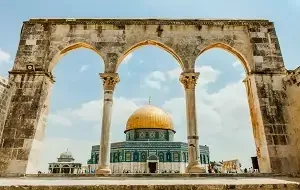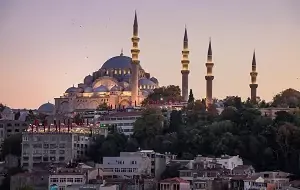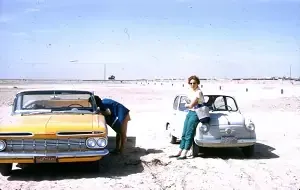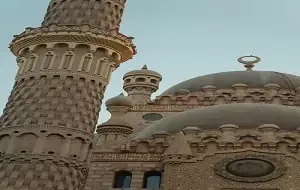Middle East Conflict History
The Middle East conflict History
is very old. Initially, this dispute was between the ancient Muslims. and after
the death of the Messenger of Allah, this dispute escalated. And as time went
on, the intensity increased. And because of its hostility to Islam,
sectarianism has exacerbated it.
From the Mediterranean to the Arabian Sea. as the Middle East Conflict History, is the center of world politics today. if we look at history, the region has been the center of civilization. and politics in Asia, Africa, and Europe for more than three centuries.
The ancient civilizations of the world were born here. Sumerian and Egyptian civilizations, Greek civilizations. which archaeologists call Eurasian civilizations, grew up near these areas. The world's three major religions, Judaism, Christianity, and Islam.
were born here. The two great civilizations of human
history. which still exist today in their ancient form, belong to the Middle
East. namely the Arabic and Persian civilizations.
It is one of the most interesting topics in Middle East history and tourism. In fact, the eastern region of the Roman Empire was the Middle East. In European civilization, the Roman Empire is said to be the world's greatest power.
Istanbul, the capital of the Eastern Roman Empire, was at its heart. an ancient city in Europe and the Middle East. After the advent of Islam, instead of the Persian and Roman-Byzantine civilizations.
the
Arabs converted to Islam and established their supremacy in cultural development in the East. The Arab-Ajjam conflict is the millennia-old Middle
East, Conflict took on new forms before, after, and after Islam. The
influence of Arab civilization in the Middle East deepened after the advent of
Islam.
Arab civilization and language and
culture made the Middle East completely Arab. Its effects spread to
Europe in the Arabian Sahara and Gibraltar. Muslim civilization in Spain was
another addition to this Arab civilization.
Muslim Spain left an indelible mark on world history and civilization. Over time, the era of Muslims belonging to Spain came to an end. but Muslim Spain left an indelible mark on human history.
Today, the entire West is indebted to Muslim Spain for the effects of the
Arab-Islamic era. Muslim Spain revived all the buried Greek sciences by
translating the sciences of the world. Muslim Spain fell, but it made a
wonderful addition to human history.
Muslim Spain is the gateway to the development
of Europe and the West. which has revived Greek, Hindi, and world sciences
through translation. And giving people the freedom to think. Jewish Muslims in
Jewish History for Spain.
Declares that Muslim Spain gave Jews the opportunity to prosper in terms of knowledge, thought, and research. Muslim Spain played an important role in the social sciences.
The separation from
church politics in Europe is due to the Muslim Spanish intellectuals. who
changed Europe and the West, the separation from the politics of Christianity.
This intellectual movement entered Italy from Spain. The church and the clergy were separated from politics. Then the movement spread. The French Revolution and later the development of science and the Industrial Revolution.
in Europe is the cause of this social and
intellectual movement. The Middle East, Conflict which is connected to
Europe has been having visible and hidden effects on it for thousands of
years.
If one reads the history of the rise and fall of civilizations. one is amazed that if a region disappears from a region. a new place will take its place. When the Byzantine Empire, the heart of European civilization and power. which had Constantinople (Istanbul), came to an end.
it was replaced by the Seljuk Turks born in Anatolia. These Seljuk
Turks came to the Middle East as nomads and shepherds from Central Asia.
First, they became Arab soldiers then they established Turkish provinces. and then they succeeded in establishing the largest empire in the world. The Ottoman Empire spread to three continents, Asia, Africa, and Europe.
and replaced the Byzantine Empire.
Interestingly, Turkish civilization originated not only in the Middle
East. but has been divided between Arabs and Persians for centuries.
Established the world's largest empire. For almost four centuries, the Ottoman
Empire ruled a Turkish civilization. Arab, African, Asian, and some European
regions. However, it did not succeed in establishing power over the Iranian or
Persian territories.
The scientific and industrial age in
Europe marked the beginning of a new phase in Western civilization. Through
colonialism, the European powers succeeded in establishing their dominance over
the whole world. Asia, Africa, the United States, Australia, and Latin America,
and at the same time, Western civilization began to dominate the world with
science and technology.
Today's world is under the influence of the
West in which technology is present. The power of technology has given them
opportunities for economic, military, and military supremacy. The United
States, Latin America, and Australia are satellites of European
civilization. Today's world is the world of the West. This Western world gave
birth to capitalism which gave birth to colonies and later world capitalism and
then superpowers.
Western civilization, which was in
the grip of capitalism and global hegemony, suffered a major blow when the
mixed civilizations of Asia and Europe, Russia, under Lenin, carried out the
Bolshevik Revolution to challenge the Western notion of capitalism and
superpower. Can be done What
It was a wake-up call for global
capitalism. A workers' government was formed. Capitalism was challenged in
Europe and the West.
Russia, which had been embroiled in
centuries of political and military conflict with Europe, emerged from a
communist and new philosophy of economy and governance. While Communist Russia
and Communist Russia challenged global capitalism and capitalist civilization
and rule, they also challenged the global supremacy of European civilization
and power, the United States of America. Competing for world power at the mercy
of capitalism, the state based on the philosophy of the workers has disturbed
the global supremacy of global imperialism.
In 1917, a revolution took place in
Russia. Meanwhile, World War I played a key role in bringing about change
around the world. The Ottoman Empire, which lasted for about four centuries,
disintegrated in World War I. Global capitalist leaders are now working on a
plan to seize the world's energy, and they have done so in conjunction with
Britain, France, and other Western powers.
World War I provided many
opportunities for Western capitalist and imperialist powers to enter the Middle
East and the Middle East began to divide and form new states.
Interestingly, several artificial
states were established in the Middle East, which was later replaced by
tyrannical rulers under a formal plan, and plans were made to establish a
religious state in the region.
Over the centuries, Jews from all
over the world, who had become part of different civilizations, came together
from Ukraine, Poland, Russia, Europe, and other places to form the Jewish religious state of Israel. Look at the contradiction of the secular West that
those who propagate their secular state and politics have forcibly created an
artificial state in the name of religion.
An American president called
Israel the gateway to Western civilization in the Middle East. After World War
II, the plan was based on the division of the Middle East. The biggest
challenge to Western and global capitalist projects in the Middle East was the
movements that were emerging in the Middle East on the basis of socialism and
nationalism. Conflicts between the two world powers, the United States
and the (former Soviet Union) fueled these movements. In Egypt, Jamal Abdel
Nasser emerged as the leader of the movement in the Middle East,
challenging global capitalism, imperialism, and Israeli strategy.
This socialist and nationalist
movement simultaneously embraced Lebanon, Egypt, Syria, Iraq, and Algeria, and
adherents of this philosophy started revolutions in these regions, including
the United States, Europe, and imperialism, as well as Israel. They were against the supremacy of the artificial
state. In addition to Jamal Abdel Nasser, Bin Bella, Muammar Gaddafi,
Yasser Arafat and Hafiz al-Assad were prominent in this movement.
We must remember one thing. Change
always comes within a society, a civilization, and a nation. We are the new
progressive mass movements in the Middle East against religious politics and
narrow-minded nationalism, surrounded by war, religious terrorism. There is no
denying that it can awaken the Arab regions and the entire Middle East against
the imperialist agenda.
The fall of the Berlin Wall, the
collapse of the socialist system in Eastern Europe, and the dissolution of The Soviet Union certainly affected the world. The world turned into a unipolar
world. The United States, the world's sole superpower, and all Western nations
became its allies.
Where it began to torment the world economy,
it also began to dominate the world militarily. The biggest and most direct
impact of this change was on the Middle East. The first Gulf War against Iraq,
the invasion of Afghanistan by the United States and its allies, and then the
second war was imposed on Iraq.
With the end of the Cold War, The Middle East was in a state of shock. Just think, states like Iraq, Syria and
Libya has been hollowed out and the seeds of religious terrorism have been
sown in the region. Religious terrorism has been used as a weapon by the US
policymakers and has now spread to the borders of Yemen and Saudi Arabia, as
well as Turkey.
The Middle East consists of 17 major
languages: Arabic, Persian and Turkish. In addition to the Arabs, Iran and
Turkey are among the most important countries in the Middle East. But Israel
suffered a military defeat, acknowledged by the Israeli Defense Ministry.
Former Secretary of State Condoleezza Rice used the term for the first time
since Israel's defeat in 2006. If we look at the Middle East scene since 1990,
we see the new Middle East that is a glimpse of the future. According to
research, the US plan to divide the Middle East into two fronts continues.
States and nations should be divided
into sects and terrorism should be allowed to flourish in the Middle East as a
permanent weapon, which will sustain the Middle East. Civil war must be
justified and opportunities must be maintained.
Syria, Iraq, and Libya are glimpses of The Middle East. And now putting the countries of the Middle East in conflict with
each other is a great strategy, that is, creating the possibility of a major
conflict between the Arab states. Incorporating two non-Arab Middle Eastern
powers, Iran and Turkey is part of this strategy.
The Middle East is as weak today as it was in the last century. There will be a fragmented, divided Middle East. a battlefield, a center of conflict and war, and an ethnic fusion in the name of Kurdish rights so that such a Middle East project can achieve ultimate success and uproot the Turkish state.
But in this scenario, the anti-imperialist role of Russia and China is crucial. Because the targets of the US imperialist agenda are China and Russia and both are united against it. The role of the Russian Federation in particular.
Therefore, if vandalism, civil war, and religious terrorism spread, the next target is not Europe, but Russia and
its allies the Caucasus and Central Asian states. Russian President Vladimir
Putin has repeatedly said that Russia is a target of terrorism in the region.
Therefore, we see that while Russia has repeatedly vetoed the Security Council
in the Syrian conflict and civil war, it has also been a regular ally of Bashar
al-Assad in Damascus and a terrorist created by the United States and its
allies in Syria. Has also been He is also involved in the war against rivals.
From the veto in the Security Council
to the resolution of the dispute, the People's Republic of China is Russia's
ally on Middle East policy. The Middle East has been the center of
various eras and civilizations for three thousand years, as in today's world
politics.
For the first time since the Cold War in the
now-divided Middle East, Russia has for the first time directly rejected
US policies that have upset the Western Middle East plan. But we must
remember one thing. Change is always about a society, a civilization, and a
nation. I come from inside We cannot rule out new progressive mass movements in
the Middle East against war, religious terrorism, and religious politics, and narrow-minded nationalism that surrounds the imperialist agenda of the Arab
region and the entire Middle East. May wake up against.












0 Comments